A note from Siofra
Hello Folklore Friends,
I hope you have all been keeping well and have had some time to explore some interesting folklore related places. Our month didn’t exactly go according to plan. As you know we were due to be take part in the Black Shuck Festival in Bungay, but things happened and we had to cancel our show, which also meant we weren’t able to put a podcast out this month. We were really sad about not being part of the festival, but sometimes life happens and we just can’t do the fun stuff we want to.
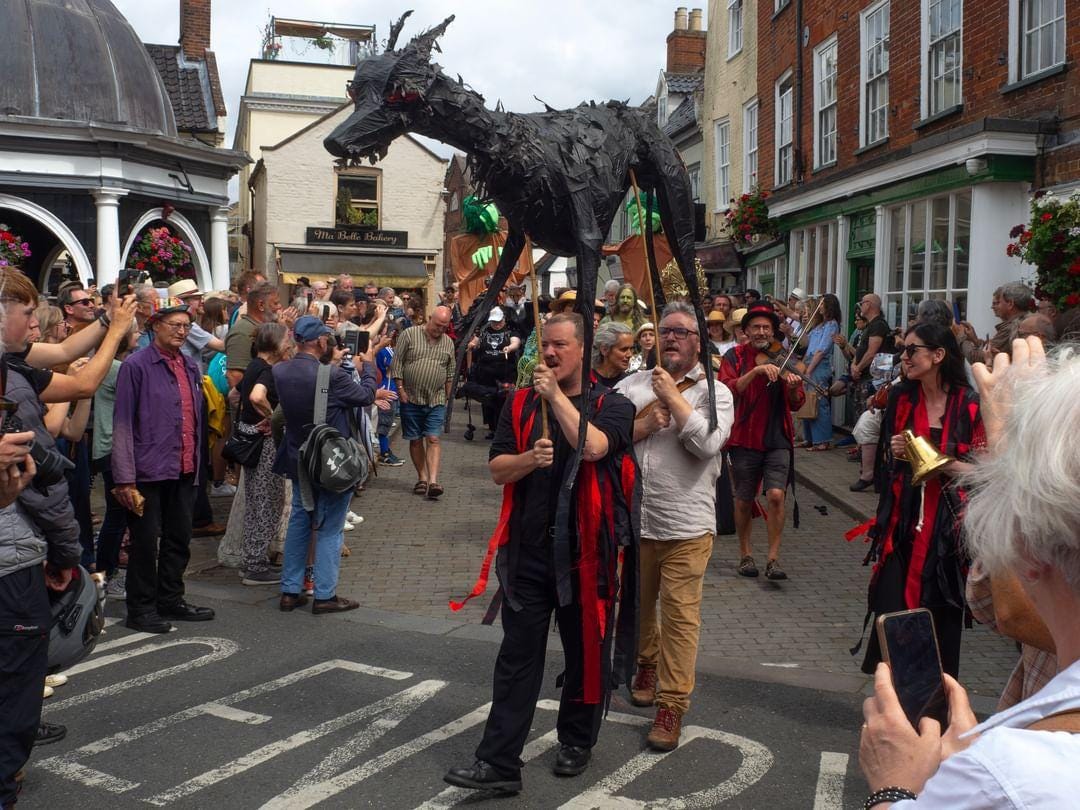
I have still managed to do a bit of adventuring you might find interesting though. I made it to the Black Shuck Festival on the Saturday. I went along to Laura Cannell and Stewart Lee’s performance in the church. I then mooched around until the parade started. I loved it, the were some amazing puppets and it felt the whole town was following along.
I’m not going to lie, I was feeling a little sorry for myself so didn’t stick around for as long as I should have. I saw photos from after I left and realised I’d missed out on a couple of fun bits. It was lovely to meet up with some friends though and I’m already looking forward to next year.
Note - I can recommend Etude Coffee at The Silo in Wainford. Lovely coffee and cardamon buns (with a side of a tale of mystery skulls discovered nearby)

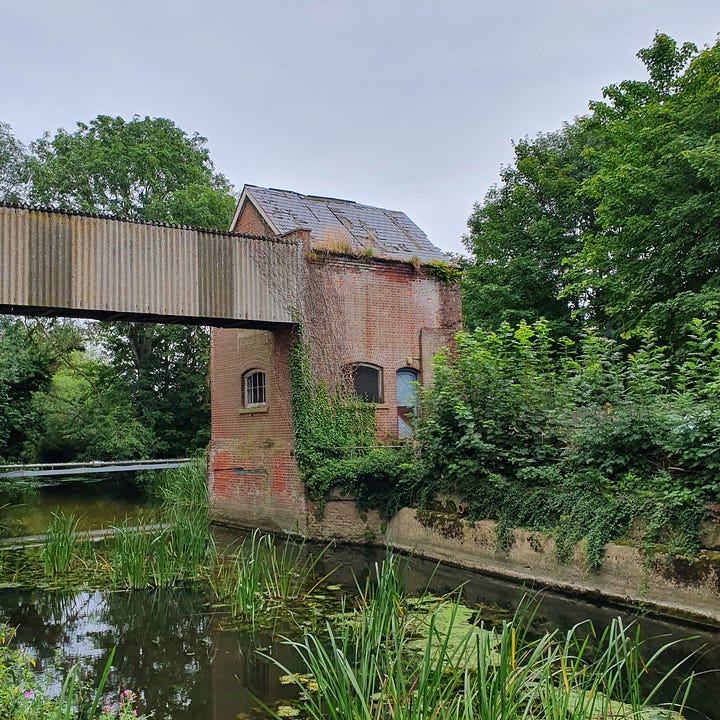
I also had a little trip to London, not for an exclusively folklore adventure (I went to see Spirited Away at the theatre) but I always manage to squeeze a little weird something in. This time I stopped by London Stone on Cannon Street (I read that it is strictly London Stone, not THE London stone). I’ve been meaning to find it for ages, and the time was finally right.
London Stone lives in a glass fronted case, opposite Cannon Street Station. The stone is a bit of a mystery and, as it is with these sorts of things, there are many stories surrounding it but very little solid evidence. But you all know wild speculation and very little fact is just the way I like my folklore.
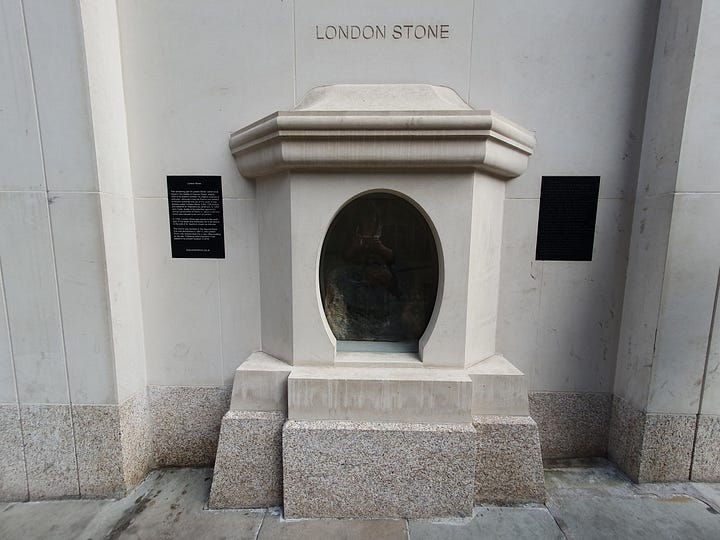
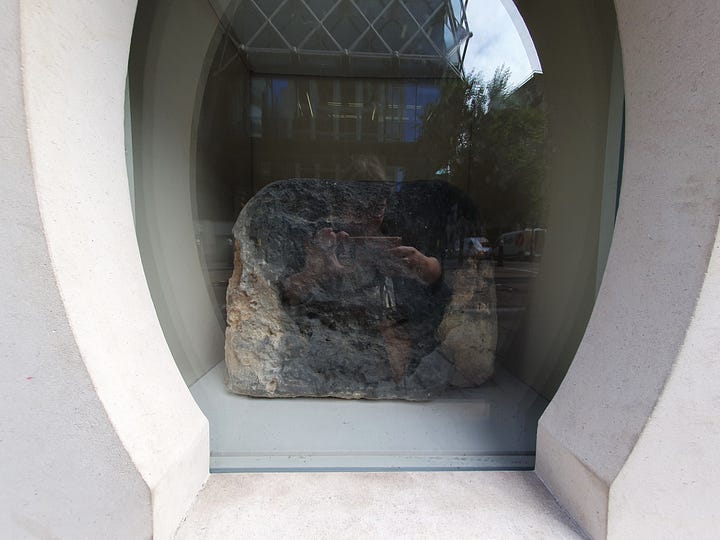
The only thing that appears to be certain is it’s been kicking around for a long time. It is first shown on a map in 1559. It was originally in the middle of the road where it proved to be a bit of a traffic hazard. Carts regularly hit the little building encasing the stone. Eventually frustrated drivers tore down the little building and pulled the stone from the ground. The stone was moved to the south side of the road, and later moved to St Swithin’s. It remind in the same place for more than 100 years.
The London Museum website lists all the myths surrounding it. I’ll list them below, but do head over to the website to read the details HERE.
Myth 1 - It has stood in London since prehistoric times
Myth 2 - It was an ancient altar used for Druidic sacrifices
Myth 3 - Medieval kings and queens would visit the stone to ceremonially take control of London
Myth 4 - London Stone has never (until 2016) been moved
Myth 5 - If the stone is moved or destroyed, London will fall
Myth 6 - The stone has been protected by a long line of guardians
Myth 7 - London Stone is the magical heart of London.
And that’s me for this month. As usual plans are bubbling away and I’ll update you as soon as the exciting things are pinned down.
Siofra💚
Norfolk Folklore Society event: Werewolves, witches and weather: how the Moon helps to shape Norfolk Folklore at Lynn Museum
We’re crossing the county to pop up at Lynn Museum on August 30 from 2pm to 3pm for a special talk as part of a series of events linked to the museum’s latest exhibition, The Moon: Meet Our Nearest Neighbour.
Join us to learn about lunar lore in Norfolk and East Anglia. Find out about the time the Moon was buried in the dark marshland of the Fens, the Werewolf of Dogdyke, Moon magic and why you should never look at the Moon over your shoulder.
For tickets, which cost just £2! click HERE.
We’re planning to have a wander through Lynn afterwards and a potential picnic, so if you fancy joining us after the talk to recreate the walk we created for the Norfolk Walking and Cycling Festival in 2019, please do so.
August folklore
In Britain, August folklore is rich with traditions and beliefs that reflect the agricultural and seasonal activities of the time. Here are some common examples:
Lammas Day (August 1st): Lammas Day, also known as Loaf Mass Day, is a traditional harvest festival celebrated on August 1st. It marks the beginning of the wheat harvest. Traditionally, people would bake a loaf of bread from the first grain harvested and bring it to church to be blessed. This bread was then sometimes used in rituals or given as an offering to ensure a good harvest.
Weather Lore: "If the first week of August is unusually warm, the coming winter will be snowy and long." "Dry August and warm doth harvest no harm."
Dog Days of Summer: The "Dog Days" traditionally run from early July to mid-August. These are often considered the hottest days of the year and are associated with lethargy and sluggishness. The term comes from the ancient belief that the star Sirius, known as the Dog Star, contributed to the heat of summer.
Harvest Time and Festivals: August is a significant month for harvest activities. Many rural areas hold harvest festivals, fairs, and fetes celebrating the agricultural season.
Corn Dollies: In some regions, it’s customary to weave corn dollies from the last sheaf of wheat or barley harvested. These are often kept until the following spring as a good luck charm to ensure a bountiful harvest in the next season. On which note, might we suggest May Queen Crafts…?
Shooting Stars (Perseids Meteor Shower): The Perseids meteor shower peaks in mid-August. Folklore suggests that wishing upon a shooting star during this time can make wishes come true. Some also believe that these meteors are the tears (or semen!) of St. Lawrence, whose feast day is on August 10th.
Shuck Zine 7: Witches
Our pals at Shuck Zine have just released their latest publication with a theme that is VERY exciting – Witches.
Siofra is part of Team Shuck and the newest zine is a patchwork of pieces that in addition to offering some brand new investigations into recent Norfolk covens, male witches, Toad Magic, witch stones and the very first and last witch trials in the county (the latter being only a matter of decades ago), there are also chances for some DIY magic with spells, recipes and even a witch paper doll to dress.
We have our copies and we very much suggest you buy your own – and then several more to give to friends! Buy Shuck 7 HERE.
NFS A-Z: R is for…The Red-faced Ghoul of Rollesby
A ghost with a blood-soaked face that is said to haunt Rollesby – but is the blood the ghost’s own, or that of the victim the spirit murdered?
Two ghosts are said to have haunted the since-demolished Rollesby Hall, a building which dated back to the mid 16th century and which finally fell to the wrecking ball in the 1950s, leaving only a garden wall and some outbuildings.
“Old Red Face” and his wife are – or were – seen, it was said, on the second Monday of each month at midnight, a day believed to have been linked with a tragedy at the hall.
The wonderful Walter Rye, whose work is often pored over by the Norfolk Folklore Society team, wrote about Old Red Face of Rollesby in The Recreations of a Norfolk Antiquary, 1843 to 1929. His story was in turn taken from fellow antiquary Antony Norris (1711 – 1786), who lived in Barton Turf in Norfolk and was educated at a Norwich grammar school.
Rye writes that the ghosts “…are variously said to be those of one of the Danish invaders, usually called Red Danes, who slew the Saxon lord of the manor in one of numerous descents on our Norfolk coast, and of the victim’s wife, who is said to follow him about, wringing her hands…
“By others, they are said to be of a Cavalier who – being justifiably irritated by his wife having habitually exceeded the allowance he had made her with which to buy clothing and gewgaws, killed her by cutting off her head with a handsaw, her blood so spurting as to redden his face and so give him the title of Old Red Faced.”
The Norfolk Folklore Society takes issue with Rye’s assertion that the above murder was “justified” and for those wondering what a gewgaw might be, it is, apparently “a showy thing, especially one that is useless or worthless” (these are the NFS’s favourite things). Rye adds that the hall was once lived in by a family with the name of Ensor, which locals believed to be a corruption of ‘handsaw’ from the implement used in the murder.
“But this seems to me idle talk, for albeit the punishment for such wanton repeated expenditure might not by some be deemed excessive it appeareth to me almost impossible to sever a human head from the body with so small an implement,” added Rye, ever the practical reporter. He includes the following ballad which he said was, still repeated in the village in the early 20th century.
In his account is included the following ballad.
“All round the rooms of Rollesby Hall
Roameth the wraith of a red-faced Dane
While from the blade of his good brown sword
Drippeth the blood of a murdered Thane
Follows him closely the dead man’s wife
Who loved her husband better than life.
So will they walk till long years wane
And a brown sword cuts through the charm again.”
As an aside, the late Bernard Davies, of The Sherlock Holmes Society of London, suggested in the 1980s that Rollesby Hall had inspired Arthur Conan Doyle when he wrote about Donnithorpe Hall in The Gloria Scott.
Davies worked out the location by examining the Victorian Norfolk railway network and ‘clues’ left in the book, such as the alignment of the sunset and the speed of a horse and trap. The Gloria Scott was Holmes’ first investigation and where he caught the bug for sleuthing – he didn’t, however, solve the mystery of Old Red Face and his wife.






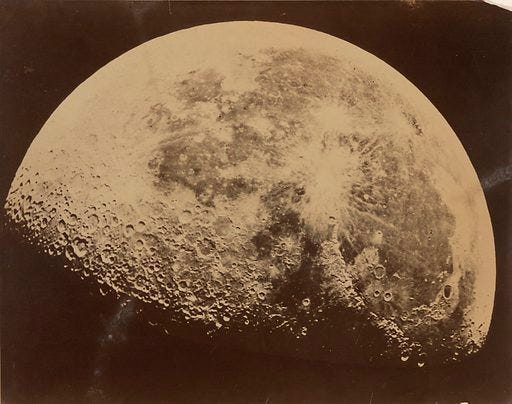
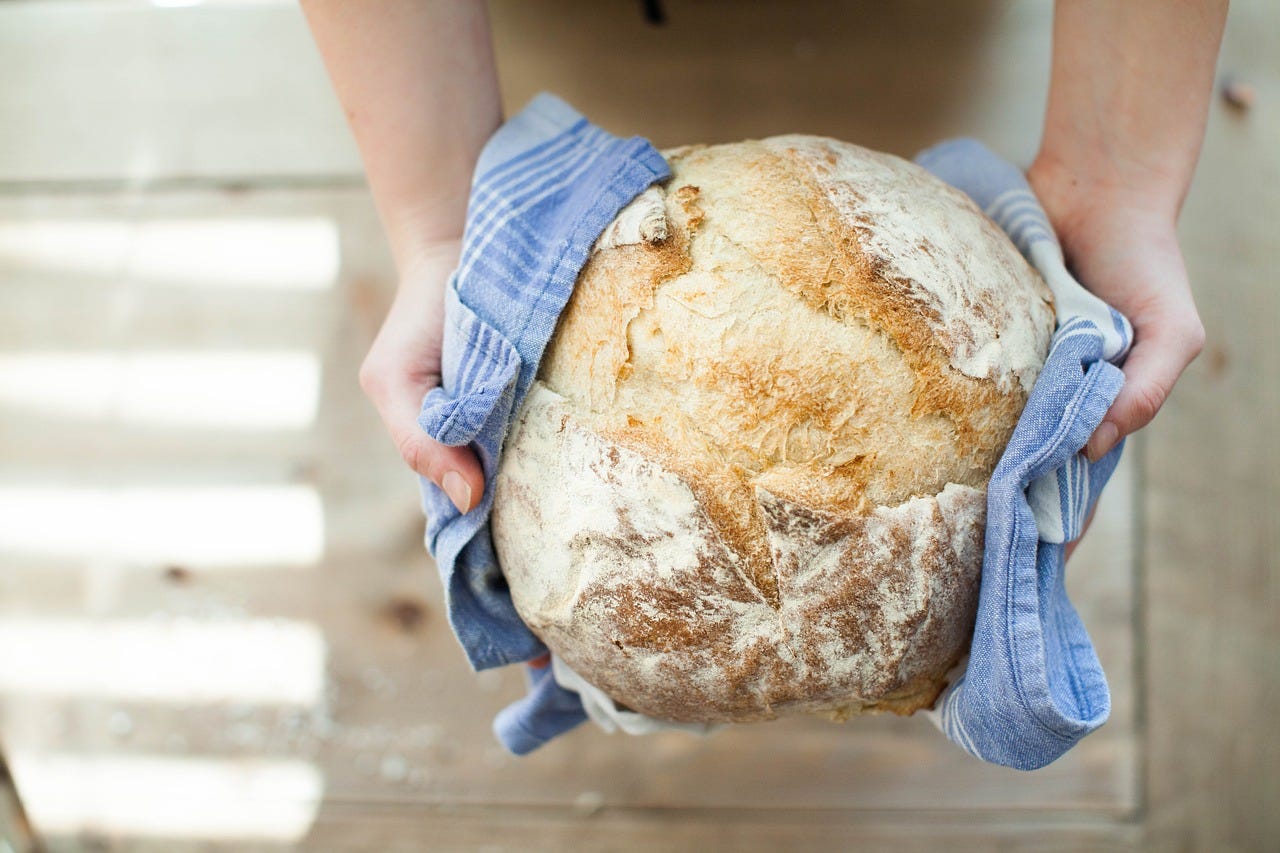

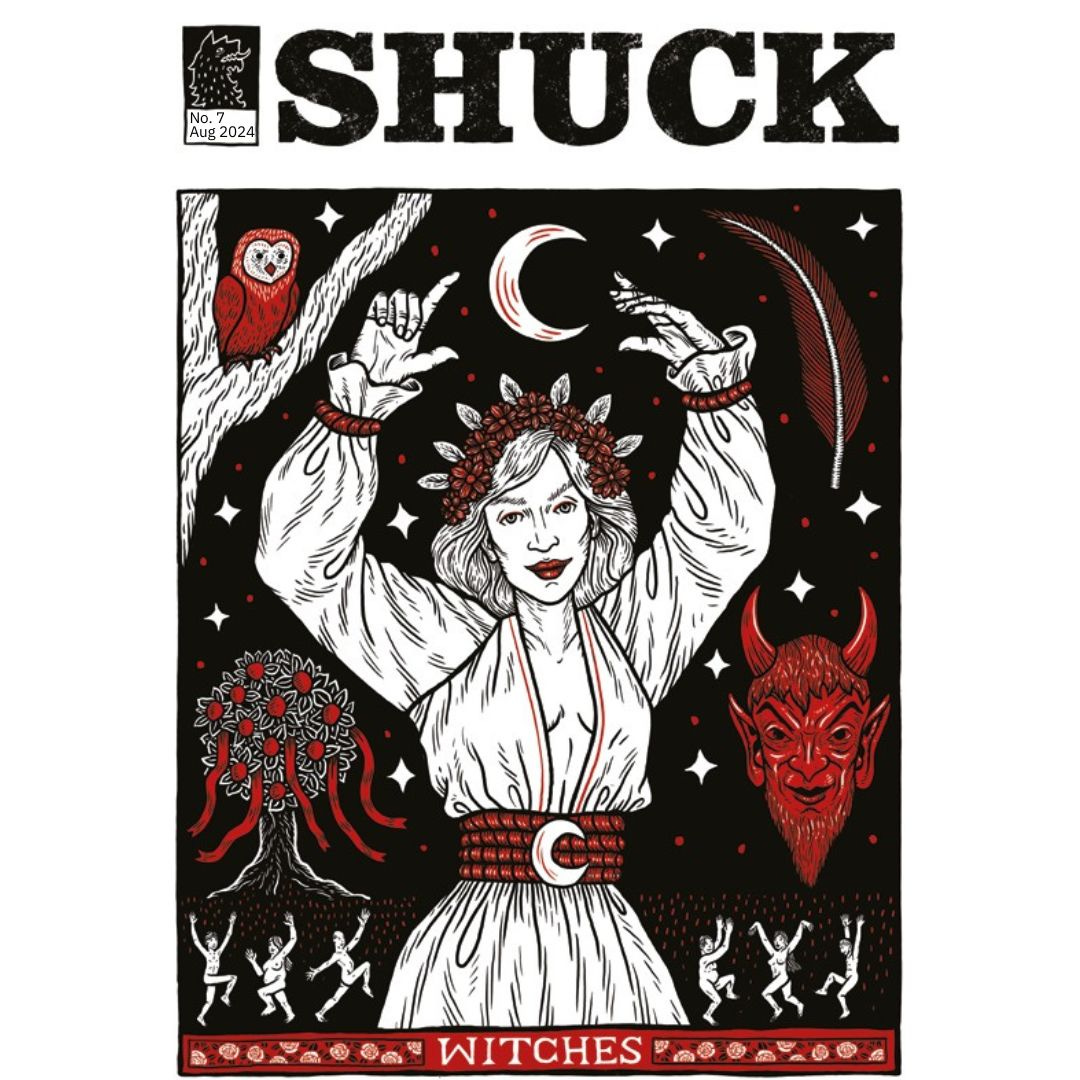
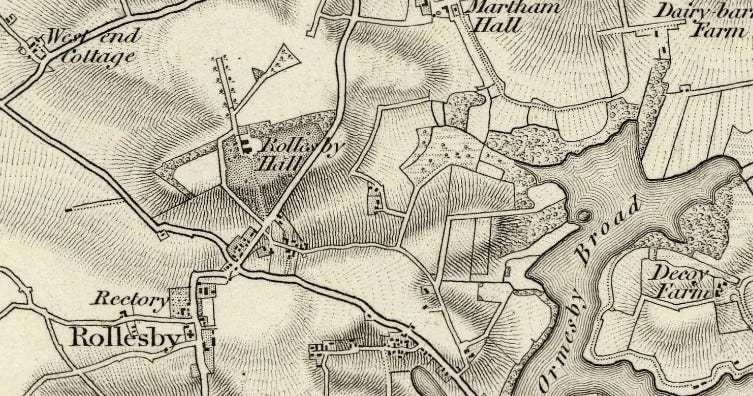
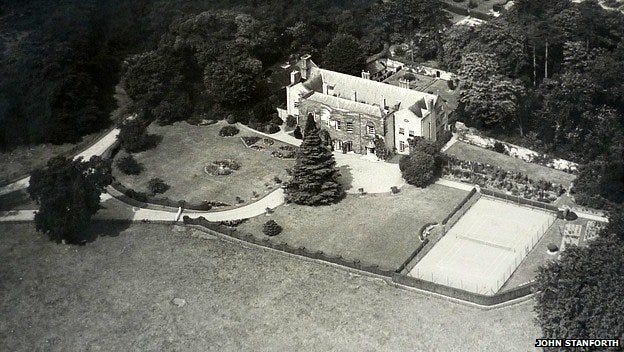
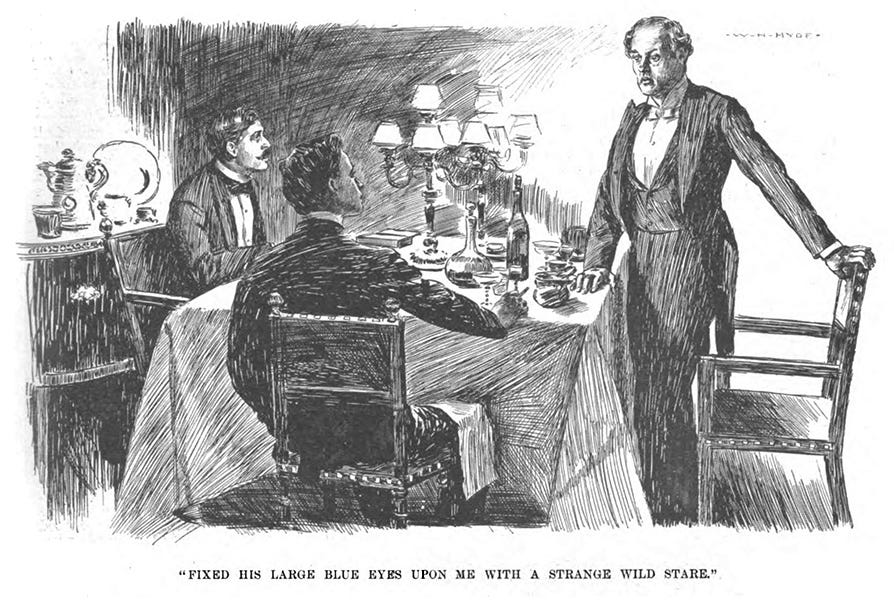
Jealous of you getting to see Laura Cannell & Stewart Lee. We had tickets, but by the time we got to Bungay, every parking space was taken. Literally. We drove around for half an hour, in and out of every car park, with no luck. By which time the show had started. No choice but to come home again. Gutted doesn't even cover it.